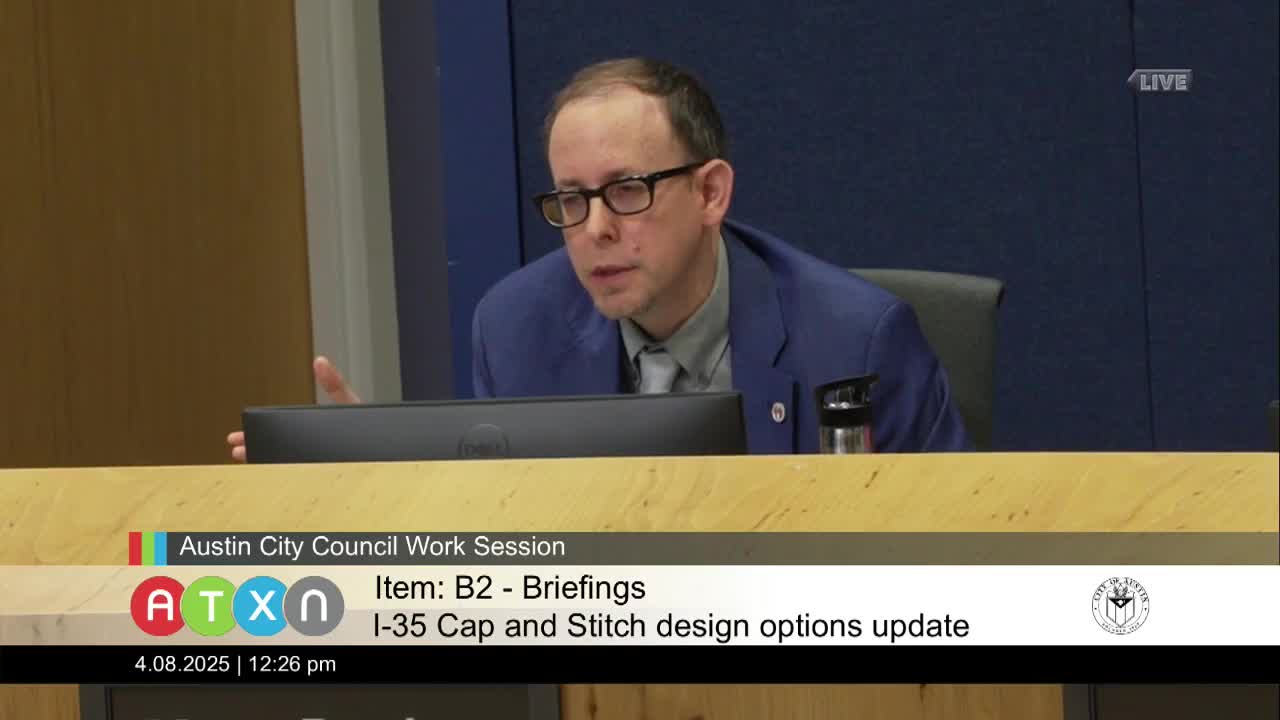Council member Harper Madison champions cap and stitch initiative to address Austin's inequities
April 08, 2025 | Austin, Travis County, Texas
This article was created by AI summarizing key points discussed. AI makes mistakes, so for full details and context, please refer to the video of the full meeting. Please report any errors so we can fix them. Report an error »

In a recent Austin City Council work session, council members engaged in a robust discussion centered on the proposed "cap and stitch" initiative, aimed at addressing deep-rooted inequities and improving connectivity across the city, particularly concerning the I-35 corridor. This initiative seeks to create green spaces and enhanced crossings over the highway, which has historically divided East and West Austin, limiting access to resources and opportunities for residents in the East.
Council member Harper Madison emphasized the importance of understanding the social and economic implications of the project. She raised critical questions about the costs of reconciliation related to city-sanctioned segregation and the potential consequences of inaction. Madison argued that while the caps could foster economic growth, they must also address the needs of low-income residents who risk being displaced as property values rise. She highlighted the necessity of ensuring that the benefits of development do not come at the expense of those who have been historically marginalized.
The discussion also touched on broader themes of equity and access, with council members expressing a desire to evaluate the project's priorities, including air quality, transit issues, and parkland. The urgency of these conversations was underscored by the recognition that many residents in East Austin still lack basic services, such as running water, and face significant economic challenges.
As the council prepares for further discussions in May, the implications of the cap and stitch initiative remain a focal point. The council's commitment to addressing systemic inequities and fostering inclusive development will be crucial in shaping Austin's future, particularly for its most vulnerable communities. The outcome of these discussions could set a precedent for how the city approaches urban development and social justice moving forward.
Council member Harper Madison emphasized the importance of understanding the social and economic implications of the project. She raised critical questions about the costs of reconciliation related to city-sanctioned segregation and the potential consequences of inaction. Madison argued that while the caps could foster economic growth, they must also address the needs of low-income residents who risk being displaced as property values rise. She highlighted the necessity of ensuring that the benefits of development do not come at the expense of those who have been historically marginalized.
The discussion also touched on broader themes of equity and access, with council members expressing a desire to evaluate the project's priorities, including air quality, transit issues, and parkland. The urgency of these conversations was underscored by the recognition that many residents in East Austin still lack basic services, such as running water, and face significant economic challenges.
As the council prepares for further discussions in May, the implications of the cap and stitch initiative remain a focal point. The council's commitment to addressing systemic inequities and fostering inclusive development will be crucial in shaping Austin's future, particularly for its most vulnerable communities. The outcome of these discussions could set a precedent for how the city approaches urban development and social justice moving forward.
View full meeting
This article is based on a recent meeting—watch the full video and explore the complete transcript for deeper insights into the discussion.
View full meeting
